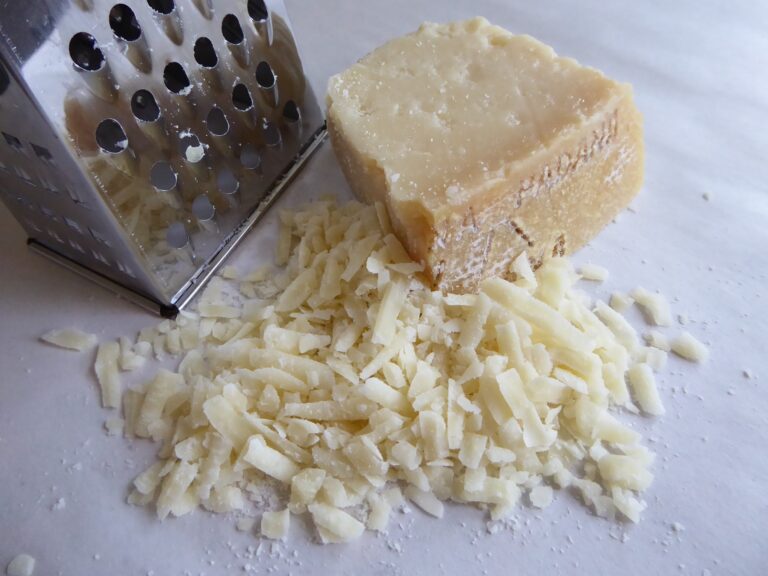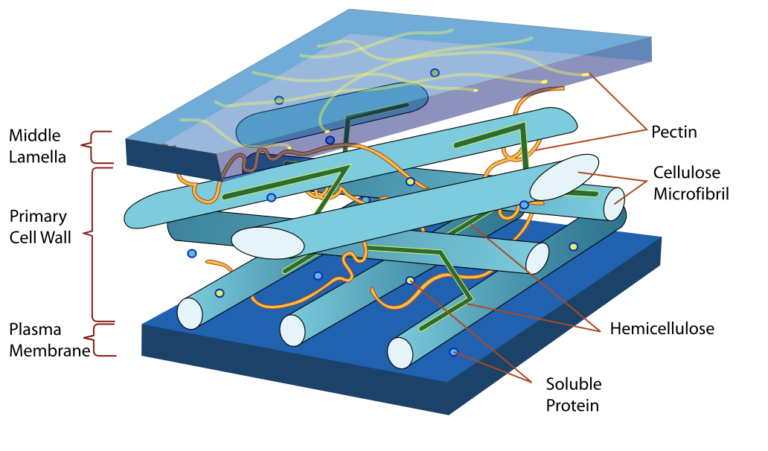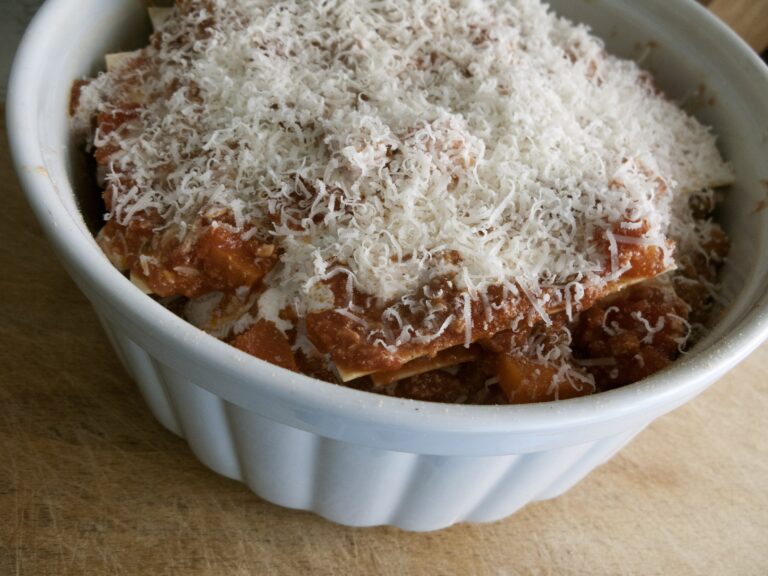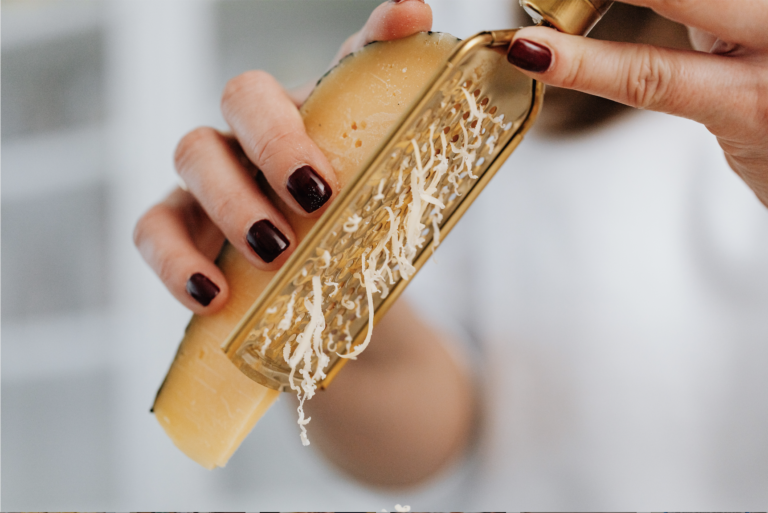A food scientist explains the origins of these headlines


A handful of cheese companies have found themselves the subject of some pretty salacious headlines like The Parmesan Cheese You Sprinkle on Your Penne Could Be Wood and the FDA Finds Wood Pulp in Major Parmesan Cheese Brands.
As a food scientist, this type of flashy news always catches my eye. I’ve seen so many exaggerations, misunderstandings, and deceptive tactics that I always feel inclined to investigate.
And I found it hard to believe that chunks of wood were being tossed into cheese all willy nilly. There’s too many laws and regulations for that to fly.
But there is some truth behind these reports and several cheese companies including Kraft Heinz, Walmart, Jewel-Osco owner Albertsons, SuperValu and the manufacturer Icco Cheese have been involved in a lawsuit over their 100% grated Parmesan cheese.
Because guess what — it’s not 100% Parmesan cheese.
Table of Contents
Toggle
So, is there wood pulp in my cheese?


The short answer is — no. This is one of those exaggerations.
But, there is a reason for the lawsuits. The fight is over a food-safe additive called cellulose.
Now, you might be thinking there’s no cellulose in my Parmesan cheese, but if you flip over the container you’ll see cellulose on nearly every ingredient list for grated or shredded Parmesan cheese.
It doesn’t matter if the container says ‘100% grated Parmesan cheese’ it still contains cellulose. It’s not 100% cheese.
Now, you’re probably thinking this is incredibly deceptive or possibly a straight up lie.
But with food law, the difference of one word, in this case ‘grated,’ can have huge implications.
Another example is the difference between a label stating ‘chocolate’ versus ‘chocolatey.’ The former is real chocolate while the later is a mimic of chocolate called compound coating.
Then, what does ‘100% grated Parmesan cheese’ mean?
The key word in this claim is ‘grated.’ If a product says ‘100% cheese’ it contains only cheese, but if you throw in the word ‘grated’ it has a whole new definition according to the Code of Federal Regulations (CFR).
In the food industry, the CFR is essentially the bible. It’s the book that defines what certain foods are and what ingredients can be included. And according to the CFR a grated cheese can include the following optional ingredients:
- Antimycotics
- Anticaking agents
- Spices
- Flavorings
So, legally the claim of ‘100% grated cheese’ is correct, even if an anti-caking agent like cellulose is used. However, to most people this would be seen as pretty misleading.
In fact, this exact issue was litigated in 2018 where a judge dismissed the lawsuit against the cheese companies saying that consumers could simply turn the container around and see that cellulose is in the ingredient statement.
Okay, then what’s cellulose? Is it safe?


If you’ve ever taken a botany class, the term cellulose might sound familiar.
Cellulose is the main component of a plant’s cell wall. It gives cells strength and rigidity but does result in the plant being sedentary. On the other hand, animals don’t have cell walls, only cellular membranes, which allow for more flexibility.
This means cellulose is in every fruit, vegetable, and plant you eat.
I also think this is where the whole sawdust or wood pulp rumors began.
Yes, cellulose is in sawdust and wood pulp since trees are technically plants and cellulose is in all plants. So no one is chopping up logs and throwing them into your cheese, but rather we consume cellulose anytime we eat fresh produce from apples to broccoli.
In fact, if you’re trying to add more fiber to your diet, you’re looking to eat more compounds like cellulose. The Food and Drug Administration (FDA) lists cellulose as a type of dietary fiber that is associated with the following positive health effects:
- Decreasing blood glucose levels
- Decreasing cholesterol levels
- Decreasing blood pressure
- Increase in frequency of bowel movements
- Increased mineral absorption in the intestinal tract
- Reduced energy intake
Why is cellulose in my Parmesan cheese?


Before this article you probably thought only cheese was in your grated Parm, but there’s usually a handful of functional ingredients like cellulose and anti-molding compounds added at low amounts.
For example, the Food and Drug Administration allows grated cheese to be 2–4% cellulose.
In these products, cellulose is used as a flow agent and helps to keep the cheese crumbles from sticking together.
Without additives like cellulose, there’s no way this product could sit unrefrigerated for months. It would quickly turn into one cohesive mass that had the texture of a hockey puck.
Since cellulose is a white powder, you can’t tell what’s cheese and what’s cellulose, which is probably why no one knew it was in their Parm in the first place.
But, I want to buy 100% Parmesan cheese


If you’d like to skip the cellulose for now, simply opt for the wedges of Parmesan or Parmigiano-Reggiano sold in the cheese section. These are both aged cheeses with the only difference being that Parmigiano-Reggiano is from Italy and Parmesan is the U.S. version of the same cheese.
You will fork over more money for these 100% cheeses because they are more expensive to make and require long aging periods before being sold. But, if it’s important to you to skip the extra ingredients in grated and shredded Parmesan this is the way to go.
Conclusion
You can rest easy knowing that no company is grinding up wood chips and mixing them with your Parmesan cheese. This fight is really over cellulose, which is found in all plant material and a source of dietary fiber.
Now it’s another argument of whether it’s misleading for a product to be labeled as ‘100% grated Parmesan cheese’ when it includes other ingredients like cellulose. And while a court decided it was legal in 2018, the verdict was recently overturned in late 2020.
The full repercussions for the cheese companies involved is still pending. But, if I had to guess, it’s doubtful this lawsuit will change whether or not cellulose is used in grated cheese, but rather will only modify how these products can be labeled in the future.


One Response
2-4%? My grocers brand of grated Parmesan tastes gritty. They should have to list the percentages as well!